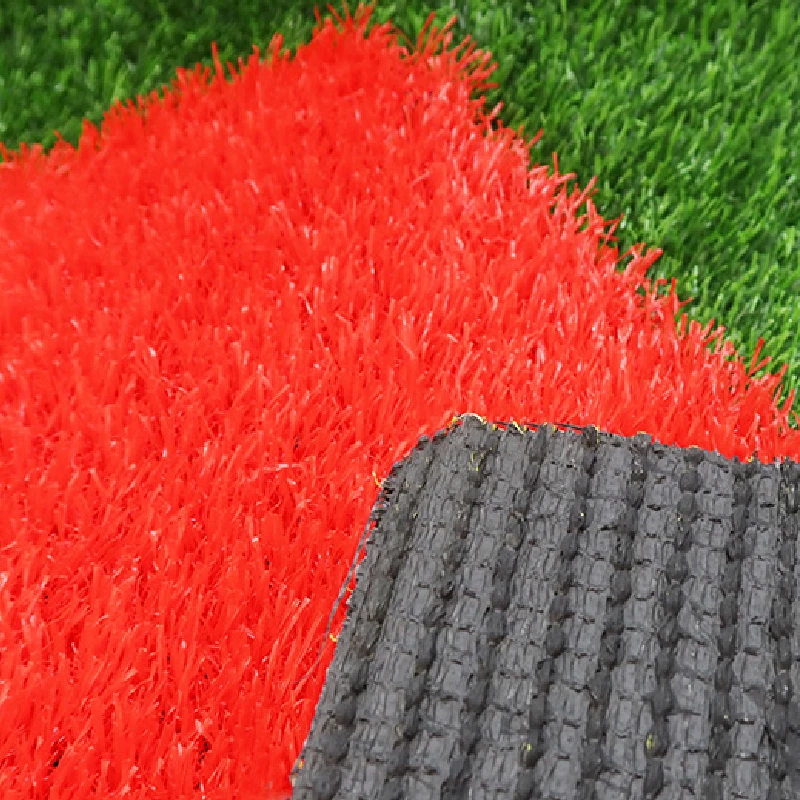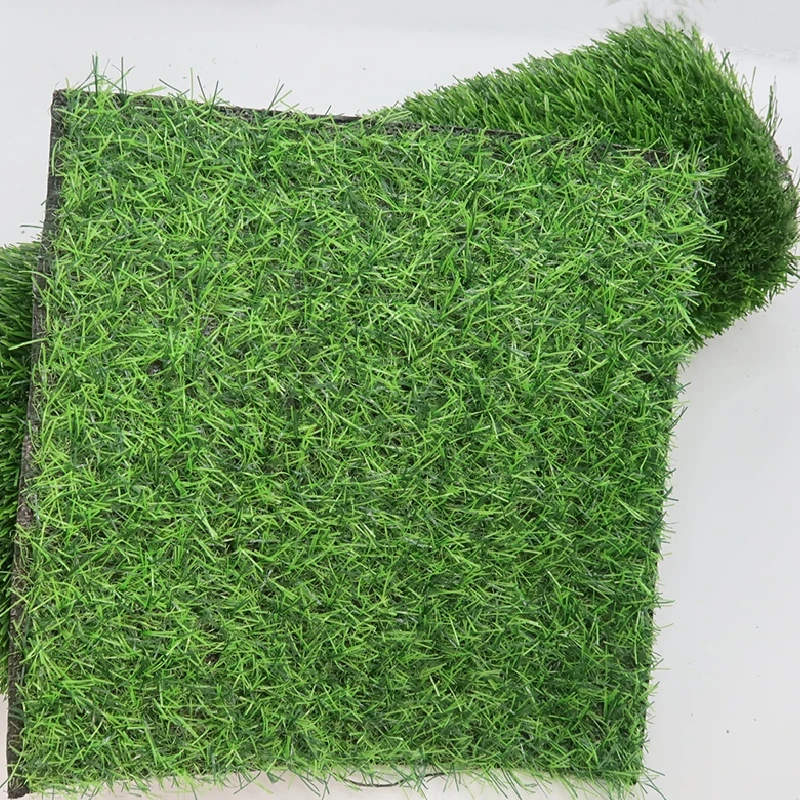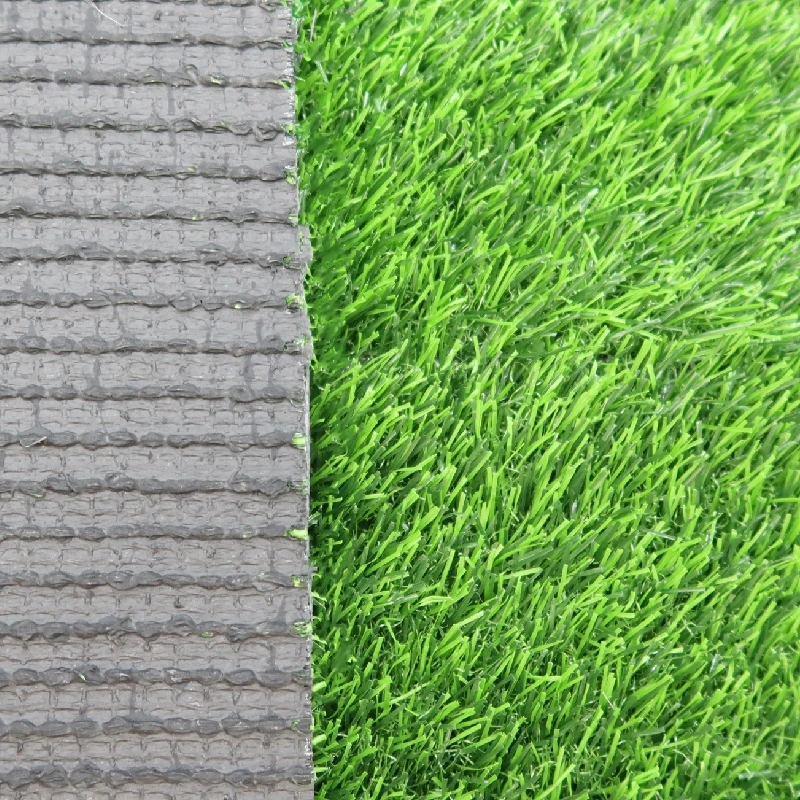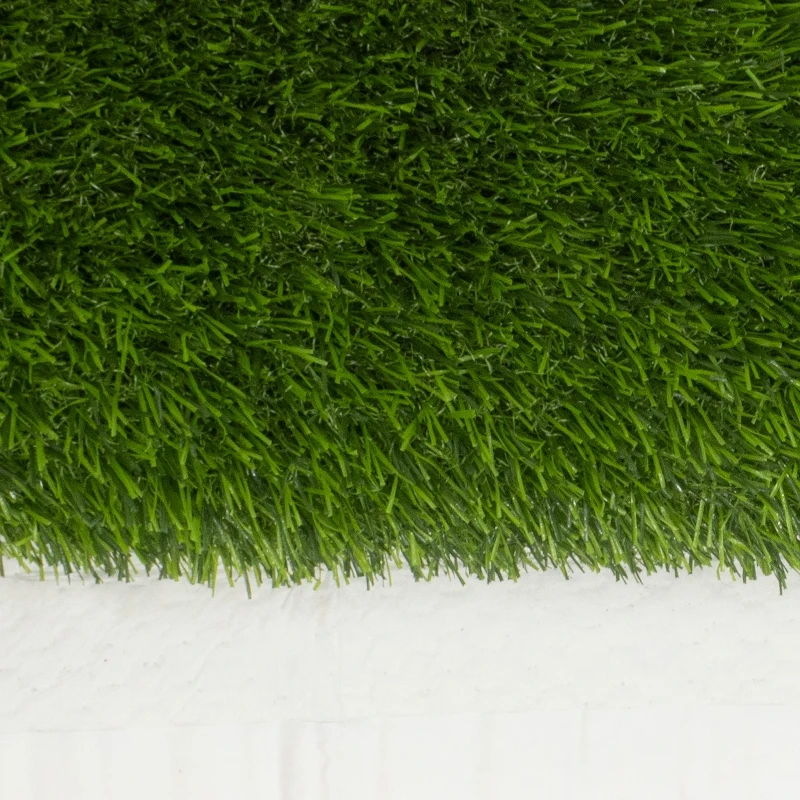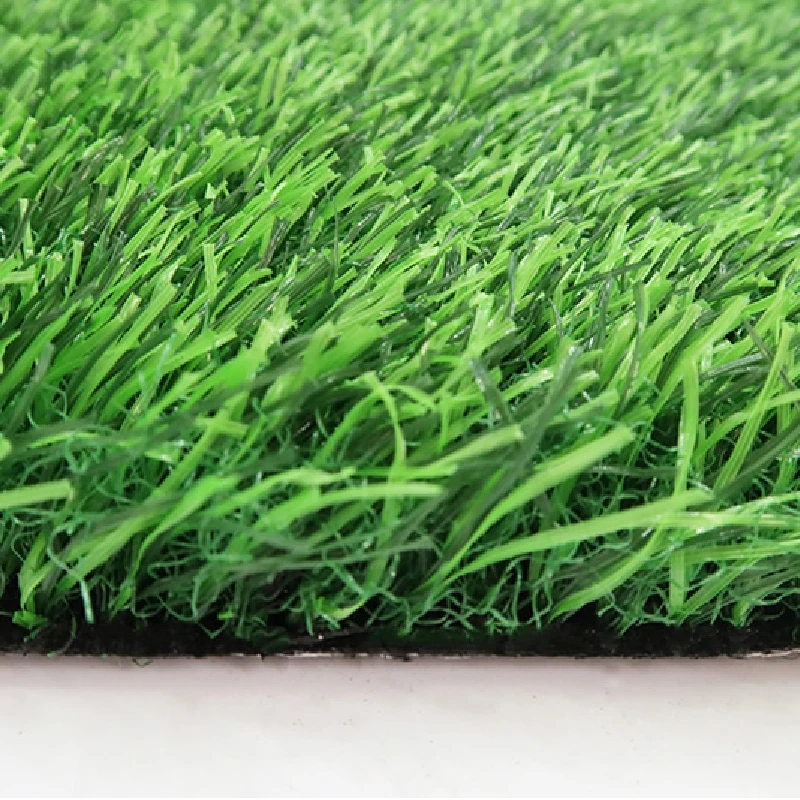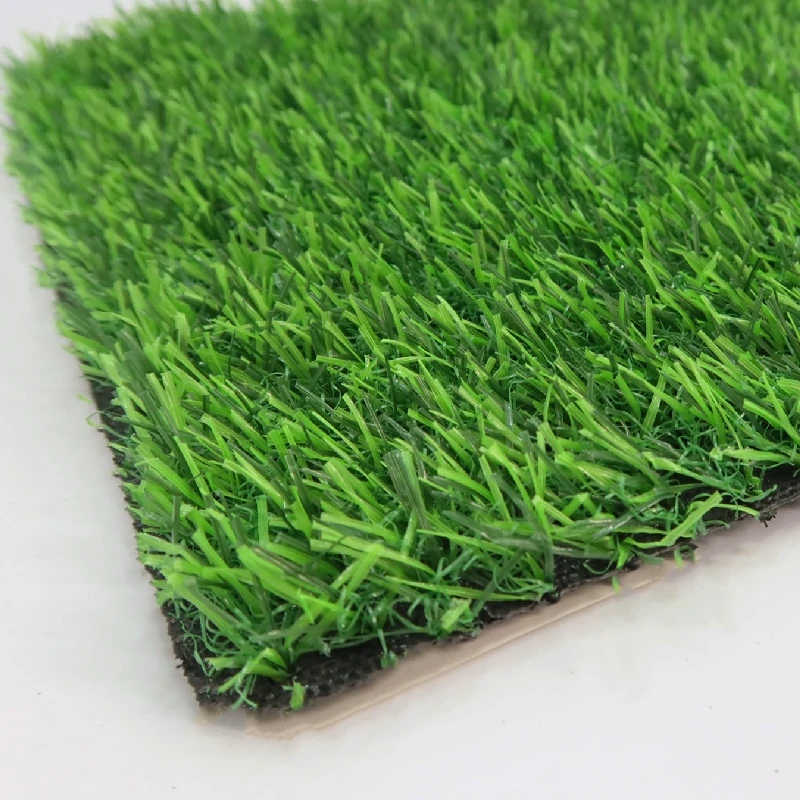Turf for Deck: Durable, Sustainable Green Solutions for Modern Spaces
Nov . 23, 2025 12:30 Back to list
Getting to Know Turf for Deck and Why It’s Catching On Worldwide
When you first hear turf for deck, you might picture a splash of greenery laid out somewhere cozy. But it’s much more than just a trendy landscaping choice — it’s a clever solution with practical and social value across various industries and urban spaces worldwide. Think outdoor decks, rooftop patios, leisure areas, and even industrial platforms that seek that perfect blend of aesthetics, resilience, and environmental friendliness.
Globally, as cities densify and people crave more green spaces without sacrificing durability or safety, artificial turf for decks has emerged as an invaluable player. It meets many pressing challenges like water conservation, urban heat, and even mental well-being by bringing a touch of nature where real grass can’t thrive.
Mini takeaway: Turf for deck isn’t just pretty—it’s a strategic, versatile material helping cities and industries solve complex problems.
The Bigger Picture: Why Turf for Deck Matters Today
According to the United Nations, urban areas are expected to house nearly 70% of the world’s population by 2050. Space is limited, green areas are shrinking, and sustainability concerns are mounting. This is where turf for deck surfaces steps in.
In practical terms, turf covers decks that face heavy foot traffic and weather exposure, without requiring soil, watering, or mowing. This matters profoundly because:
- Traditional lawns often drain excessive water and need constant care, not ideal for rooftops or industrial decks.
- Urban heat highs can be mitigated by turf acting as thermal insulation.
- It offers a safe, anti-slip surface perfect for public spaces and workplaces.
Additionally, environmental regulations like ISO 14001 push industries toward greener, low-impact materials, giving turf an edge over conventional decking options.
Mini takeaway: Turf for deck is a practical response to urbanization, climate change, and efficiency demands worldwide.
What Is Turf for Deck? Breaking It Down Simply
If you imagine lawn grass on a deck, you’re halfway there—but with substantial enhancements. Turf for deck is a synthetic surface designed to mimic natural grass’s look and feel, but engineered for the rigors of decking environments. It usually involves durable, UV-resistant fibers attached to a drainage-friendly backing, allowing water to clear quickly and preventing mold or decay.
This synthetic layer sits atop wooden, concrete, or composite decks, offering a soft, comfortable ground underfoot, but resistant to staining, crushing, and fading like you’d get in natural turf.
From an industrial perspective, turf for deck integrates landscaping aesthetics with modern engineering, supporting outdoor comfort zones for residential and commercial sectors alike. It even helps humanitarian structures by providing safe, hygienic flooring in temporary or remote workstations.
Mini takeaway: Turf for deck is synthetic grass specially built to perform in demanding deck environments, bridging nature and engineering.
Core Components of Turf for Deck: What Makes It Work?
1. Durability and Weather Resistance
Besides being UV-stable, turf fiber materials (polyethylene, polypropylene, nylon blends) must endure temperature swings, rain, and foot traffic without fading or matting. The backing needs a robust weave with proper drainage holes to avoid water pooling, which can otherwise compromise deck integrity.
2. Safety and Comfort
Many turfs intended for decks feature anti-slip coatings and cushioned underlayers. This reduces accident risks on wet or uneven surfaces while ensuring barefoot comfort in leisure spaces—something natural hard decks rarely offer.
3. Maintenance and Cost Efficiency
One of the biggest appeals is how little upkeep turf requires. No watering, mowing, or fertilizing saves time and environmental resources. Over long periods, that means less headache for building managers and homeowners.
4. Aesthetic Flexibility
Today’s turf comes in various colors, blade lengths, and densities customizable to environment themes—from a crisp modern lawn to a soft meadow vibe. This versatility is especially prized in hospitality and urban architecture projects.
5. Environmental Impact
Many manufacturers are offering recycled or recyclable turf, striving to reduce plastic waste footprints, in line with circular economy principles. That said, the debate about microplastics remains active in environmental circles, highlighting the need for ongoing innovation.
Mini takeaway: Turf for deck succeeds through a blend of tough materials, safety features, ease of care, versatile design, and mindful manufacturing.
Real-World Turf for Deck: Where and How It’s Used
You’d be surprised how many different corners of the world and industries turf for deck has reached. In North America and Europe, city rooftop gardens and commercial complexes use it to create social-friendly green pockets without soil weight or mess.
In the Middle East, harsh sun and water scarcity make synthetic turf a godsend for leisure decks at resorts and private homes. Meanwhile, in disaster relief and temporary housing, NGOs place turf for deck to create hygienic, slip-proof surfaces resistant to mud and dust, enhancing dignity and safety.
Industrial zones in Asia deploy turf as well, where conventional flooring may not be feasible due to dust, noise, or chemical risks — turf for deck becomes a smart, resilient alternative.
“In a recent project in Tokyo’s commercial district, turf transformed rooftop decks from neglected spaces into green terraces, boosting worker morale and cutting heat absorption by 20%.”
Mini takeaway: Turf for deck is a go-to solution for urban retreats, hazardous zones, and emergency setups worldwide.
Advantages and Why Turf for Deck Is a Long-Term Win
- Cost Savings: Lower water bills, minimal maintenance labor, and reduced replacement frequency.
- Sustainability: Helps green urban infrastructure and saves natural resources.
- Safety and Comfort: Anti-slip, cushioned surfaces reduce injuries and boost user satisfaction.
- Social Impact: Provides inviting areas supporting mental health and community activity.
- Durability: Rain, sun, and snow don’t easily degrade it, extending lifespan compared to traditional decking.
Plus, there’s a subtle yet powerful emotional benefit when stepping onto a turf-covered deck — that small touch of nature reconnects us with calm and ease, especially in fast-paced cities.
Mini takeaway: Turf for deck merges economic, ecological, and emotional benefits into one ecosystem-friendly package.
Trends on the Horizon: What’s Next for Turf on Decks?
The future looks promising. Biodegradable turf fibers and backing materials are now under development, aiming to tackle plastic waste head-on. Integration with green roofs and solar panel setups is creating multifunctional outdoor spaces optimized for energy and nature.
Digital innovations could also soon allow turf surfaces embedded with sensors that monitor foot traffic, wear, or even ambient conditions, helping facilities managers plan maintenance smartly.
Lastly, several cities are updating building codes to incentivize green-friendly materials, pushing turf into new types of infrastructures — from schools’ playground decks to hospital terraces.
Mini takeaway: Turf for deck is evolving rapidly toward smarter, greener, and more integrated outdoor solutions.
Challenges & How the Industry Is Tackling Them
Though fantastic, turf for deck isn’t perfect. Concerns about microplastic runoff, heat retention during intense sun, and initial upfront costs linger. Also, poor installation can lead to drainage problems or uneven wear.
Experts recommend the following solutions:
- Using next-generation backing that traps fewer microfibers and encourages recycling.
- Combining turf with ventilated decking systems to combat heat buildup.
- Investing in certified installation pros and quality assurance to maximize lifespan.
- Innovating with hybrid turf that blends natural fibers for biodegradability.
Honestly, the industry's response feels promising — and it’s just a matter of time before ongoing research crosses over into cost-effective mass solutions.
FAQ: Quick Answers About Turf for Deck
- Q1: How long does turf for deck typically last?
- A: With proper maintenance and quality installation, turf for deck surfaces can last between 8 to 15 years—even in harsh climates. UV resistance and fiber quality are key factors in longevity.
- Q2: Is artificial turf safe for children’s play areas on decks?
- A: Yes, many turfs come with anti-bacterial coatings and meet safety standards for children’s areas, including cushioning to reduce injury risks.
- Q3: How is maintenance different from natural grass?
- A: Maintenance is much simpler—expect occasional brushing to keep fibers upright and rinse to remove dust or debris. No watering or fertilizing needed.
- Q4: Can turf for deck withstand heavy industrial foot traffic?
- A: Absolutely. Specially designed turfs with tougher fibers and reinforced backing are made for industrial use, resisting abrasion and compressive forces effectively.
- Q5: Are there eco-friendly turf options?
- A: Yes, many vendors now offer recycled-material turf or products designed to be recyclable themselves. Look for certifications that back these claims.
A Quick Look: Turf for Deck Product Specs
| Feature | Specification | Benefit |
|---|---|---|
| Fiber Material | Polyethylene / Nylon Blend | Durability & UV stability |
| Pile Height | 20-30 mm | Soft, natural feel |
| Backing | Perforated PP with latex coating | Water drainage & anti-mold |
| UV Resistance | 1000+ hours (ASTM G154 test) | Fading protection |
| Anti-slip rating | R11 (wet surface) | Safety assurance |
| Weight per m² | 1.5–2.0 kg | Lightweight, easy install |
Vendor Overview: Comparing Turf for Deck Providers
| Vendor | Durability Warranty | Eco-Friendly Options | Price Range (USD/m²) | Customization Available |
|---|---|---|---|---|
| GreenDeck Solutions | 10 years | Yes | 30–45 | Colors, pile height |
| UrbanGreen Turf | 8 years | Limited | 25–40 | Standard only |
| EcoTurf Worldwide | 12 years | Yes, fully recycled | 35–50 | Full customization |
Wrapping Up: Why Turf for Deck Is Worth Your Attention
In a world where urbanization, climate concerns, and lifestyle demands collide, turf for deck presents a multi-layered answer. It’s more than just a surface; it’s a reflection of thoughtful design meeting modern industrial and social needs. Its ability to blend sustainability, practicality, safety, and beauty—often at surprisingly reasonable costs—makes turf a winner on nearly every front.
If you’re considering decking options that must endure, inspire, and impress, turf is unquestionably worth checking out. Don’t just take my word for it—curious folks often discover that once they try turf, the question isn’t "Why turf?" but "Why not turf?"
For a deeper dive and product details, visit: turf for deck.
References
-
Durable, Eco-Friendly Turf for Balcony | Enhance Your Urban Space
NewsNov.24,2025
-
Turf Between Pavers: Sustainable Green Paving Solutions for Modern Urban Spaces
NewsNov.24,2025
-
Discover the Benefits of Turf and Pavers Backyard | Sustainable Outdoor Design
NewsNov.24,2025
-
Top Quality Artificial Grass – Sustainable, Durable, and Stylish Turf Solutions
NewsNov.24,2025
-
Durable and Eco-Friendly Thick Artificial Grass Solutions | Hoya Grass
NewsNov.24,2025
-
Synthetic Turf: Sustainable Green Solutions for Sports, Industry & Urban Living
NewsNov.24,2025
Products categories



